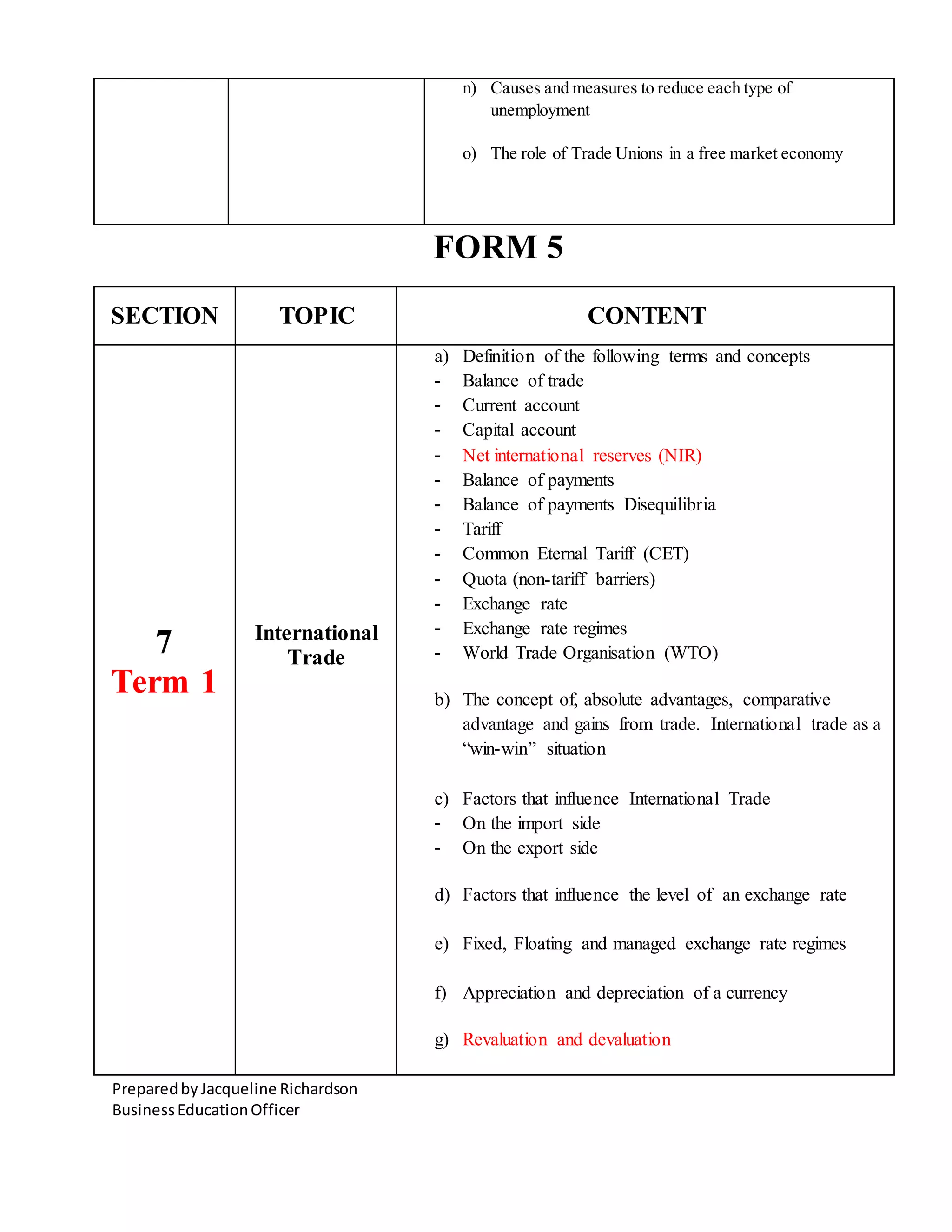The document outlines the economics curriculum for Forms 3 to 5, detailing the topics covered each term, including aspects of microeconomics and macroeconomics, market structures, international trade, and the financial sector. It emphasizes the importance of understanding economic concepts such as production, resource allocation, market forces, and government roles in economic management. Additionally, it includes guidelines for student assessments and SBA projects throughout the academic year.














